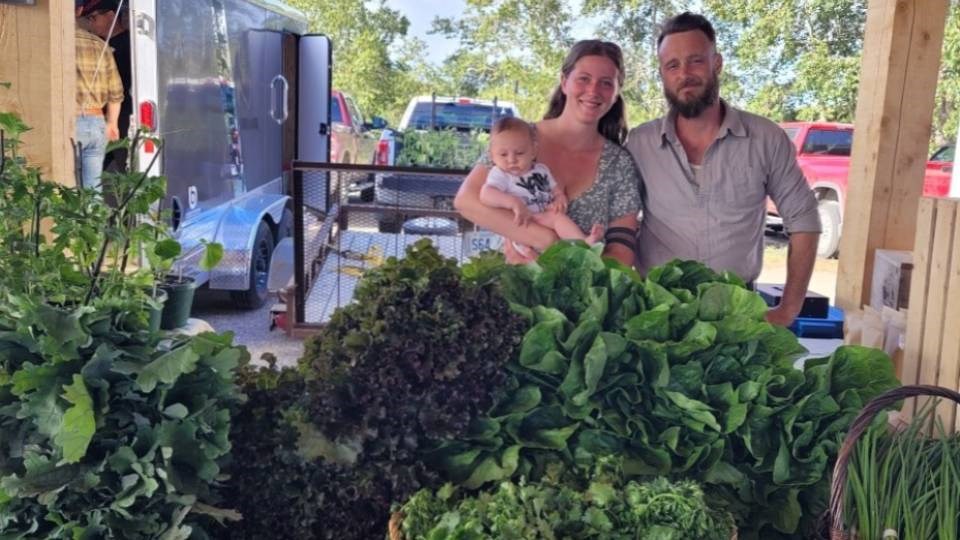EDITOR'S NOTE: Farm to Fork is an editorial series about the evolving and innovative way food is grown, raised and produced in Northern Ontario with stories about growers, harvesters, consumers, advocates, opportunities and issues of regional food security.
When Luke Dinan pulled out a map to show his wife, Eva, a 10-acre tract of land he had purchased in Cochrane, Ont., back in 2019, her reaction was positive, although she had one big question.
“Where is Cochrane?” she asked. “North of Sudbury?”
“Keep going,” Luke said.
“North of Timmins?”
“Keep going,” he said.
Now, just a handful of years into their new careers as farmers and owners of Grey Wolf Gardens, Luke said the young southern Ontario family is more than happy they made the decision to keep going north and settle into the community of just over 5,000.
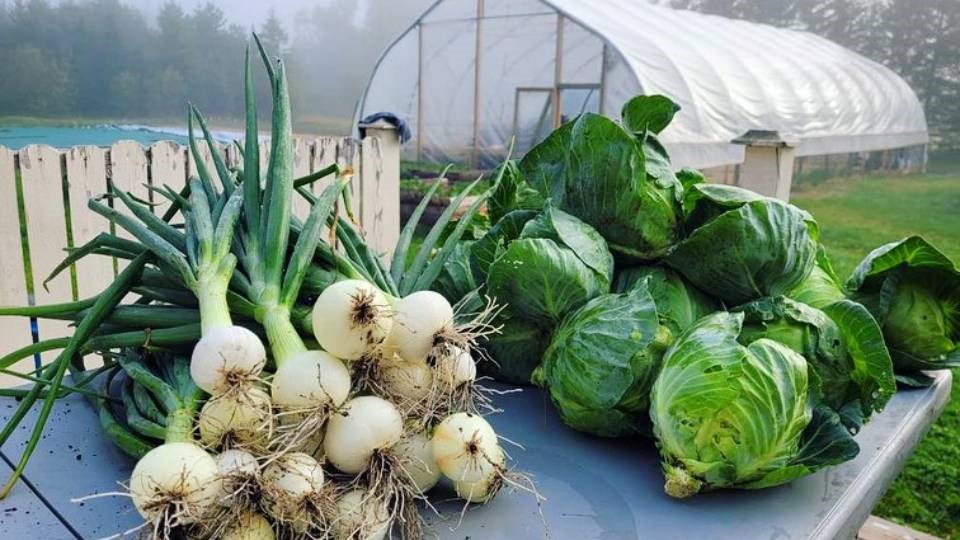
The Dinan family has already put a quarter-acre of property into production, and has worked with a neighbour on preparing another half-acre. Two more acres have been fully mulched and the Dinans expect to be forming beds on those later in the fall for production in 2024.
So far, they’ve grown, harvested and marketed their eye-popping cabbage, zucchini, pak choi, kohlrabi and lettuce. It’s a roadmap, Luke Dinan said, for others to follow in the hopes that the region can soon have a self-sustaining food industry.
Imagine the health benefits — not to mention the supply chain stability — of accessing fresh, nutritious tomatoes, garlic and kale grown just a hundred kilometres from your doorstep.
“What we’re doing has been a huge, huge success,” Dinan said.
Part of that success stems from their unique approach to farming.
Propane and natural gas greenhouse heating is eschewed in favour of massive, wood-burning boilers to generate the energy needed to grow vegetables. And the crops are kept at the necessary temperatures season-round by a process called root zone heating.
It’s an innovative one-two punch that won Grey Wolf an award and $10,000 in the Northern Food Security Challenge earlier in 2023.
The challenge called on producers from across the North to boost food security in the region. It was an initiative of Bioenterprise Canada, a national organization that helps food producers innovate and grow their businesses.
“Basically, the notion is that we need to be replacing propane and natural gas as heating fuels with wood fibre,” Luke Dinan said.
That important first step — and the urgency around the search for cheaper, more sustainable heating methods — became apparent in 2023.
“Like we’ve seen this year, the price of propane and natural gas can go up dramatically,” he said. “And through carbon pricing, escalating or ongoing wars and impacts to the supply chain, you can make a really strong bet that the price of these fuels is going to continue to go up over time.”
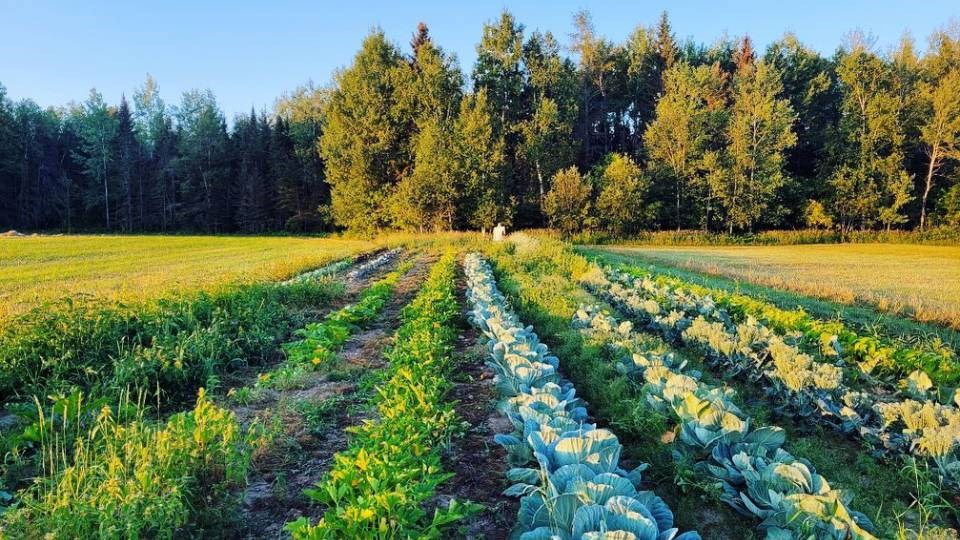
Wood boilers are bringing the heat
The wood boilers that Dinan uses are roughly the size of a refrigerator and made by Australian company Fröling — “incredible feats of engineering”, Dinan calls them.
Once in use, the boilers emit mostly steam from their stack.
“What emissions there are coming out of the stack are low enough that they are cycled back into the forest,” Dinan said. “It’s the true circular bioeconomy — carbon cycling back to the forest from which the fibre was was removed.”
The pulp, Dinan said, is sourced from the Timmins Forest and Wildlife Reserve, a 150,000-acre woodland between Timmins and Smooth Rock Falls along the Mattagami River.
“We can’t lose sight of the fact that high-quality forest management is a critical component of this high-quality food production that we're after,” Dinan said. “That's really what I see is the key part of the evolution of food in the North.
“And the people at Timmins Forest and Wildlife Reserve really value high-quality forest management and they've made a commitment to quality forest management,” Dinan said.
“It's really obvious that they walk the walk.”
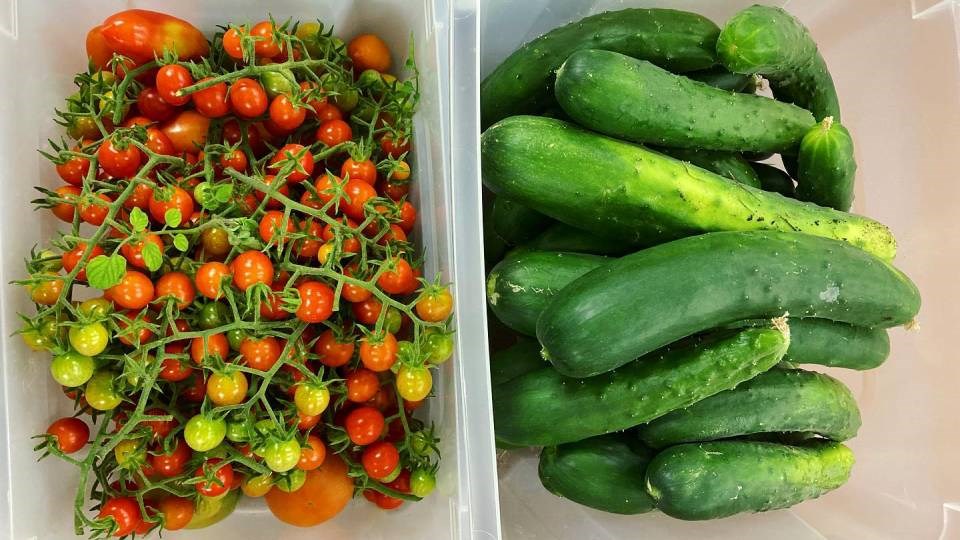
Once the boilers are running, Grey Wolf Gardens utilizes a technique called root zone warming, an approach that is more common in the temperate UK, but hasn’t been fully adopted widely in Canada.
Dinan said that’s been Grey Wolf’s “strongest” innovation when it comes to extending Northern Ontario’s growing season.
“The heat that is supplied to our nursery is all provided through radiant heat lines, right underneath the tabletop, right underneath the trays,” Dinan said. “It’s like the same kind of radiant heating that would go in somebody's house.”
On top of the table, when the temperatures begin their winter drop, metal hoops support runs of greenhouse plastic, which turns each table into a “mini greenhouse within the greenhouse,” Dinan said.
That’s a different approach to most commercial greenhouses, which typically rely on forced air furnaces.
“What I have found is that [gas heating] is still not enough and on those really cold nights, the furnace runs constantly and you still end up with frost damage, you still end up losing crops,” Dinan said.
“That's because they're heating every cubic foot of airspace in the greenhouse, they're heating a huge amount of space where we actually only need the heat in quite a small amount of space.”
Dinan said tabletop heating allows them to essentially shrink the footprint of the greenhouse, while still retaining the same crop yield well into the autumn and early winter. From that point in the calendar, Dinan said, the farm focuses on cold storage and preparing for the next season.
“As of next year, with the introduction of the rest of this infrastructure, it means that we'll be able to provide locally grown food to the community throughout the entire year,” Dinan said.
Motivated by the support of Timmins’ market
It’s a “slow and expensive” process, Dinan said, which often involves 100-plus-hour work weeks, but he said the effort has been worth it.
“We have product to market, and we have it in sufficient enough quantity and variety that we are competing well with the other vendors at the Timmins market,” he said.
“It's producing a return that's comparable to farms that I worked at down south.”
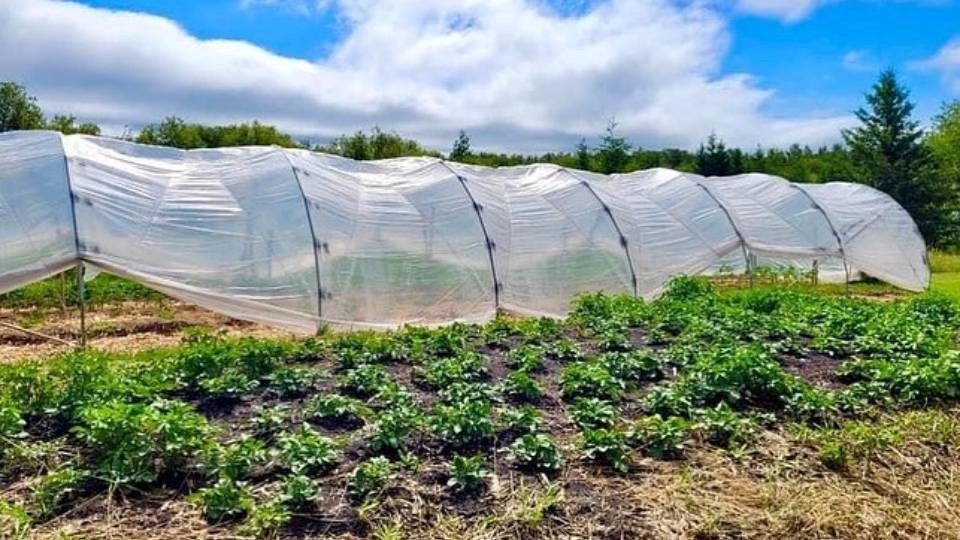
Part of that success comes from the “amazing” reception the farm has received at the Timmins market, Dinan said.
“We have a good market, with people getting out and supporting the community,” Dinan said. “And we're definitely, hugely blessed that we have a market with sufficient enough traffic that we can do that volume of sales.
“But it's a huge step in the right direction to know that even in our first year, we're doing like per-market sales that are definitely comparable to what I was doing in southern Ontario.”
Customers, he said, have been thrilled to see what the Dinans have been growing.
“They're thrilled that this produce has been grown locally, that someone's putting in the time and the effort to figure it out and get it to market so that it's available for them.
“And that's huge for us,” Dinan said.
“It really helps keep you going when you feel like you just don't have too much left in the tank.”

